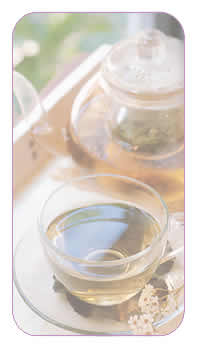| |


A Japanese monk called Dengyo Daishi in the early 8th
century first brought tea to Japan from China. Their tea
drinking custom has been strongly influenced by Zen Buddhism
ever since. Macha (powdered green tea) reached Japan at
the end of the 12th century, and by the 1500s, it became
popular and widely accepted among the upper class. A Japanese
tea ceremony takes place in a traditional room that is
designated especially for the occasion. Guests gather
at an appointed time for sweets or a small meal, followed
by the serving of macha tea. A Japanese tea bowl and whisk
are the most important instruments used in making macha
for the ceremony. The origin of chanoyu was established
in the 16th century and has continually played an important
role in the lives of the Japanese.

The Chinese tea ceremony is unlike the way Japanese performed
with special emphasis on the tea rather than the ceremony.
What the tea tastes like, smells like and how one tea
tastes in comparison with the pervious one would be the
quintessential issues that the Chinese tea ceremony are
most concerned with. The use of the right water and control
of the temperature are the two key issues in order to
make the best flavor tea. Tap water should be filtered
before heating and distilled water should be avoided as
it is void of natural elements. The ideal water should
contain the least amount of minerals in order to bring
out the richness and sweetness of the tea. The ideal temperature
of making strong teas such as red or black tea would be
100oC; for lighter teas such as green or flower teas would
be 80oC. The style of tea drinking is slightly different
between the southern and the northern regions of China.
In southern regions such as Fujian and Chiujao, small
cups and unglazed clay teapots are commonly used, while
in northern regions such as Shanghai and Beijing, larger
cups are used. The benefit of drinking tea after one’s
meal is that it helps resolve meat and fat, especially
for those people who live mainly on meat (such as ethnic
minorities in China). In addition, it helps to discharge
nicotine out of system for smokers. Tea has become one
of the daily necessities in China.

Afternoon
tea was invented in England by Anne, the seventh Duchess
of Bedford in the second half of the 19th century. In
her day, people usually had very late dinner around eight
o’clock. The Duchess would become hungry around
four o’clock every afternoon due to the long period
of time between lunch and dinner. She asked her servants
to serve tea, bread and butter and cake to her room during
the late afternoon. The Duchess found the experience was
very delightful, and it became a daily ritual for her
family and close friends. In the beginning this was an
upper class social affair, but it soon became popular
in the public teashops and tearooms. Furthermore, the
English have classified ‘tea’ into low-tea
(also called afternoon tea) and high-tea. Afternoon tea
is served on small tables or “coffee tables”
with lighter meal such as sandwiches, scones, cookies
fruit tarts and rich cakes; it’s normally served
around four o’clock. High-tea is served with heavier
meal such as ham, roast beef, lamb, bread and butter,
pastries, custard and cakes on the dinner table around
five or six o’clock. For the middle classes, ‘tea’
meant afternoon tea. It can be served either formally
in the dinning room or living room tea table or informally
in the garden or kitchen. For the working classes, ‘tea’
was the main cooked meal of the day and eaten when returned
from work. Today, the afternoon tea ritual still has remained
true to its original intent.

Chai
is originally from India and now has become one of the
most popular beverages in the world. Drinking Chai becomes
a tradition and also part of everyday-life habit for Indian.
Chai is generally made up of 4 parts:
• Rich black tea
• Milk
• A combination of various spices
• Sugar or honey
In India, the used of spices may vary from region to region,
however, some households even created their own home-made
Chai. The most common spices to make Chai are cinnamon,
ginger, cloves, pepper and cardamom. Spices need to simmer
in the milk or cream in order to bring out its own flavors.
Hence, the traditional way for Indian families to make
Chai is to add black tea, milk or cream, spices and honey
or sugar all together. Keep it on stove for 24 hours by
slow simmering and then grab a ladle when they want some.
It is not like tasting fine teas; instead it is more like
a casual tea, a folk tea or even a comfort tea.
You can even create your own Chai recipe!
|
 |